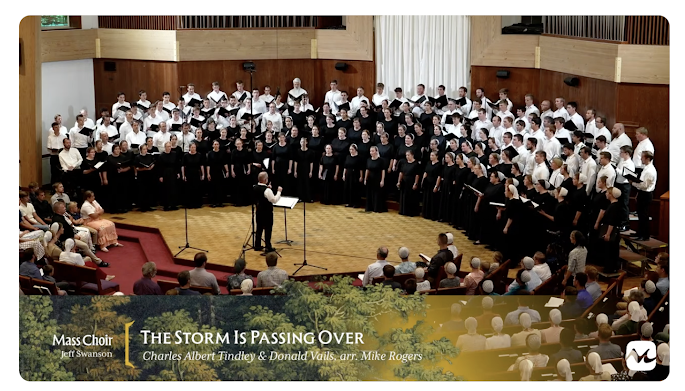the Plain Professors
Two Anabaptists' Views on Education
Monday, December 8, 2025
The 2025 Meistersingers Livestream Recording
Tuesday, December 2, 2025
Really Neat Painted Canvas Sea Shell Beach Art
Saturday, November 29, 2025
Giving Tuesday is Coming!
Next week, December 2nd, is Giving Tuesday, a global movement to orient ourselves away from the consumerism that sometimes accompanies the holiday season.
Make a difference in something worthwhile.
Click here to donate: https://musiccamp.info Thank you!
Tuesday, November 25, 2025
Beach Field Trip 2025
Saturday, November 8, 2025
Effective Use of Chalkboards and Whiteboards
This article was originally written for and posted at The Dock for Learning.
Effective Use of Chalkboards and Whiteboards
Our classroom chalkboards or whiteboards are an amazing tool that we teachers can use to demonstrate and emphasize whatever concepts we are presenting to the students. Here are a few tips on how to use our boards more effectively.
Keep them clean! At least once a week, erase everything (except perhaps a few assignments in the upper corners) and wipe them down with water and then a dry cloth. Dirt and smears distract from your teaching and clutter what you’re writing. (Hint: Many teachers have noticed that any kind of cleaners eventually take the smooth shiny finish off whiteboards. Just use water!)
Erase often. The more white space there is, the less distractions there are. Then students can focus on the task at hand.
As much as possible, use neat handwriting. You are modeling for your students what you expect their writing on their written assignments to look like. Let them know what you expect by visually demonstrating this every time you write on your board.
Use your board to write student assignments. It saves much time and repeating if we can just post the assignments on the board for the students to refer to as needed. Always have them in the same location so that students know where to look.
After orally presenting the main point of your lesson, demonstrate on the board the concept you just taught, going through it slowly (it might be easy for you, but new and confusing to students), and explaining step by step as you mark on the board. This gives them both an oral and visual presentation. The process of watching a teacher demonstrate how to do something the right way, step by step, is invaluable.
Pause in between steps. This gives the students a chance to comprehend it at their own speed, (and students do comprehend at different speeds–go about the pace for your slowest student.) It also gives students a chance to think on their own what step comes next.
Once students have heard, read, and seen their teacher demonstrate how to perform a new concept, use your board to let them try it out, telling you which step to take next and how to do it. You can affirm or correct them as needed, and they get valuable guided practice.
While most of these concepts apply to math, English, and spelling, we should use our boards for science and history as well. Students don’t process reading text or looking at pictures in books the same way that they process seeing a teacher draw or explain a concept on the board. Think of it like viewing a chalk drawing. It’s a bit mesmerizing to watch. If your students are using science sketchbooks, draw on the board whatever concept you are studying in science that day, demonstrating what you want them to draw in their sketchbooks. Be sure to label things, too.
For social studies or history, our boards can be visual billboards of dates and persons. It doesn’t matter how bad your drawing is, students will appreciate the effort and enjoy seeing you put it on the board. It’s yet another way to remember a fact or concept. The board can also be used to illustrate cause and effect or chronological order.
Our boards are also wonderful to use for art. The entire room can see from afar what their drawing or the art process is supposed to look like, and as you display step by step, each student can use your work on the board as a sample or springboard, and proceed with their own individual project.
Our chalk or whiteboards are probably the most useful tool we have to use besides our voices and textbooks. Use them effectively, and your students’ comprehension will increase.
Saturday, October 18, 2025
For Mothers with Toddlers: Sit Still and Be Quiet, Please!
Sit Still and Be Quiet, Please!
As a young mother reading Little House on the Prairie series to my children, I marveled at the expectations placed on the young characters to sit quietly for hours. In our modern times, even adults wouldn’t have the ability to be so attentive. What was the difference? What have we gained, or lost, in our present-day society by doing everything faster? While these questions are beyond the scope of this article, I believe that training our children to sit quietly and listen for an extended period of time is a virtue that will benefit them throughout life. Below are a few thoughts and practices that I have gleaned over the years.
- It begins early. Train your child to be quiet as soon as they start making noises with meaning for example: mama or no no. Meal time prayers and family devotions are a great place to start. By the time your child is talking, they should be able to stay quiet in church services.
- Expect to have to train them. While this sounds like a no-brainer, it’s easy to think that a child should just behave because they know better, but most children will need a parent to remind them. Again and again.
- It begins in the home. It is not the Sunday school teacher or the grade school teacher’s job to see that your child sits quietly. The child should gain this discipline before then.
- Dads need to be involved. Small children generally sit more quietly for their fathers.
- Keep the electronics away. Don’t use it as a babysitter or even as an educational toy for young ones. Your children will have plenty of screen time in their lives without it.
- Teach by example. A young child wants to be “big.” Point out to them that Daddy, Sister, Brother etc. are sitting quietly also.
- Skip the toys and food for church services. Feed your child a good breakfast and keep the diaper bag for diapers. More stuff does not make a child quieter, in fact, it usually has the opposite effect.
- Make staying in the church auditorium more pleasant than being elsewhere. While this may seem contradictory to the above point, make every effort to stay sitting in church by having a special toy or book to play with. Also, if a child knows that they will be disciplined when taken out, they will likely think twice before making a fuss.
- Do not relax on the rules. If you do need to take your child out, because they are being noisy, keep them sitting in your lap just like you would in the pew.
- Teach them how to sit properly. Don’t allow them to stand up on the bench or on the floor, if they are too big to stand on your lap.
- Expect them to be involved. By the time your child can read, they should help sing and follow along in their Bibles with everyone else at church.
Finally, God has vested parents with the authority to teach and train our children. He will supply the wisdom and patience needed to complete the task.
- a mother of eight
Saturday, September 20, 2025
Facinating Fix-ups
This post was written for and posted at The Dock for Learning.
Fascinating Fix-ups


Many years ago I was visiting another school and classroom when I heard the teacher refer to “fix-ups.” I had never heard the term before and was a bit perplexed, so I asked her about it and she explained. “Fix-ups” is the term used for students correcting their papers.
At first I was a little taken aback. Aren’t they just supposed to try to do well the first time? Isn’t that a bit lame giving them the opportunity to redo their work?
The more I thought about it though, I thought it was a fabulous idea, and one that I have been using in my classroom for years. Here are a few reasons why.
Students try harder the first time, as they know that they will be required to correct any wrong answers. If approached correctly, it becomes a game or a challenge to do well the first time.
It gives students immediate feedback so that they can see what they got wrong. This prevents establishing a wrong method, such as when learning long division. The sooner the mistakes are corrected, the better, so that no wrong habits are established.
Grades on tests improve! The students get in the habit of working more slowly and carefully, as well as being more diligent with their work, and this transfers to tests.
It establishes a culture of “excellence expected” in the classroom.
It keeps students busy and hopefully not wasting any time.
Here are a few suggestions of how to implement the use of “fix-ups” in your classroom.
Explain to your students what you will be doing: grading their work and getting it back to them (as soon as you can) so that they can correct any wrong answers. Stress that the goal is to have a 100% by the end of the day.
Note: This applies only to daily work, not tests.
Choose your subjects. We do this with math, language arts, spelling, and vocabulary, but you might want to start with just math and then work your way up.
Grade like crazy! I have a camping chair that my students take up the stairs for me every morning break and at lunch. They set it down where I can see all of them, and I supervise and grade from my chair. I get fresh air and sunshine, the papers get graded, and the students know the parameters (don’t get the ball that went over the neighbor’s fence), so it’s safe. My goal is to have all of the math papers (that have been turned in) graded by morning break, and the rest of everything graded by lunch. Using teacher’s keys, I can usually grade, supervise, and carry on a conversation all at the same time. Teachers have superpowers.
Help! If my students have gotten a wrong answer the second time, I expect them to try once more, and then I will help them if they still can’t get it. This provides a good opportunity for them to see me work the problem up on the board, or to get an individual lesson at their desks.
Good enough. I have found that students usually have a 98%-100% after the second fix-up, and I help them with the last one or two problems if they don’t. Every once in a while we don’t have enough time for a 100%, but I expect at least an A (93% or higher), and then I call that “good enough.”
Implementing the use of “fix-ups”, if done in the right way, can be a very positive, motivating, and helpful tool for teachers to use in their classrooms.
Saturday, July 5, 2025
Lancaster Music Camp Livestream Link
Thursday, June 26, 2025
Tuesday, June 10, 2025
2025 ChoralFest Link from the Shenandoah Christian Music Camp
Monday, June 9, 2025
Vibrant Words

Monday, April 28, 2025
Lighthouse Art and a Real Lighthouse











































%202.jpeg)






